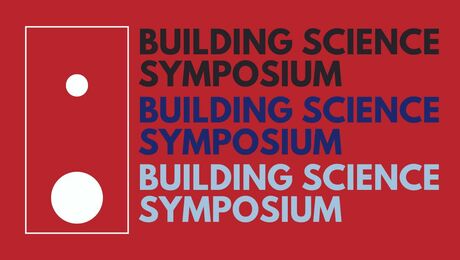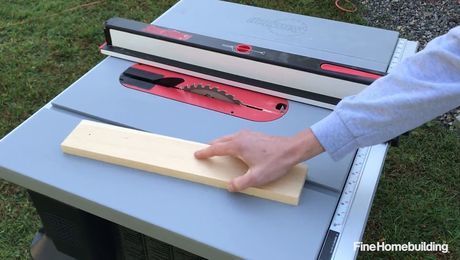I have exposed engineered wood I beams in my basement. Can I screw/nail into them for various storage/hanging purposes? In the sides? The bottom?
Thanks, Todd
I have exposed engineered wood I beams in my basement. Can I screw/nail into them for various storage/hanging purposes? In the sides? The bottom?
Thanks, Todd

Fine Homebuilding is excited to be the official media partner of the 2024 Building Science Symposium series! This event offers builders, tradesmen, architects, designers and suppliers to discuss topics ranging…

"I have learned so much thanks to the searchable articles on the FHB website. I can confidently say that I expect to be a life-long subscriber." - M.K.
Get home building tips, offers, and expert advice in your inbox
Fine Homebuilding
Get home building tips, offers, and expert advice in your inbox
© 2024 Active Interest Media. All rights reserved.
Get home building tips, offers, and expert advice in your inbox
Become a member and get instant access to thousands of videos, how-tos, tool reviews, and design features.
Start Your Free TrialGet complete site access to expert advice, how-to videos, Code Check, and more, plus the print magazine.
Already a member? Log in
Replies
They're designed for a small amount of load on the bottom flange. you should be fine as long as you don't get carried away.
For instance - A bicycle should be fnie. But hanging a bunch of lumber from a couple of joists would definitely overdo it.
Just use some common sense.
Drill/nail straight up or into side of flange?
Todd, pre-engineered wood floor joists/beams are generally 40 to 60% stronger than a comparable 2x. Difference is in the way they manufacture the pre-engrd vs the forest grown 2x.
You can nail into the bottom of these just as you would a forest grown piece of lumber. You could lay up a full drywall ceiling if the spans and the loading above were within reason. Use the same common sense as you would for those.
Were you looking to hang something like one of those outdoor two people swings that hang from chains....well that's a different animal. And there are things that can be done to increase the strength of the pre-engrd.
The strength of the pre-engrd is in vertical section which is a very specialized type of, dare I say it, plywood. You can cut small holes through that vertical and not affect the strenght but there are limits here also. There I would check with the manufacturer of the Ibeam.
As an Architect with an engineering background I usually specify the pre-engrd for all my residential but the design calcs I use are based on standard 2x material. Nice safety factor. And minimal deflection.
Hope this made some sense.
ciao, ted
"re-engineered wood floor joists/beams are generally 40 to 60% stronger than a comparable 2x."Mis-reading that by a novice could lead to mis-application.While the fact is true, it means that we then use smaller members or design with longer spans or increase layouts from 16" to 19.2" or 24"So the individual joist in his home is not 40% more capable of handling extra point load than a solid lumber joist is
Welcome to the Taunton University of Knowledge FHB Campus at Breaktime. where ... Excellence is its own reward!
At this point I'm thinking about very light loads, eg hooks and eye bolts to hold electrical cord, flourescent lights. The ceiling is 9 ft, so it's pretty inconvenient to work on, even if it offers more options. I'm at the early stages of putting together my workshop after just moving in. I sure wish I had spec'd more electrical in the first place. There's virtually no lighting or outlets, so I'm running some cords for now. I did include a 220v though, fwiw.
all of that weighs a lot less than the sheet rock that would normally be hung from that plane
Welcome to the Taunton University of Knowledge FHB Campus at Breaktime. where ... Excellence is its own reward!
Given on all points. I was trying to relate the strength to the use. Is obvious by the use of pre-engrd that the home has been built recently.
I have had a couple of questions raised that relate to this subject. [In one case was hired to provide a structural analysis of holes made in the web]. Most homeowners make similar observations about what strength this "new" type of joist has and will they damage or cause a loss in carrying capacity. I believe the gentlemans questions go to this concern. Most owners would just bang away and not understand the potential consequences if they get it wrong.
ciao, ted
Yes. My biggest concern would be in the way things get fastened. I did once see a bottom chord that had been literally destroyed by a DIY trying to nail into the hard lam materials and splintering it to dickens
Welcome to the Taunton University of Knowledge FHB Campus at Breaktime. where ... Excellence is its own reward!
I will weigh in by proposing an alternative for feed back. Rather than introduce several point loads (even though the loads sound as though they are small) on metal fasteners screwed into the lower flanges, I would look into the idea of spreading the load over several joists. By attaching some 2x material with a construction adhesive and minimal fasteners I wouldn't expect there would be any structure concerns. A quick call to the joist manufacturer could confirm that. This would give a fresh non structural member to screw or nail into and you wouldn't feel to bad about making the changes that will likely happen as the shop gets set up.
yeah, run a 2x4 or 2x6 perpendicular to the joist on their bottoms screwed up into the bottom chords, then hang stuff from that
Welcome to the Taunton University of Knowledge FHB Campus at Breaktime. where ... Excellence is its own reward!
As someone has said they are meant to take some load. I would tend to use screws with a pre-drilled hole. When I first used TJI's 20 years ago the contractor I worked for didn't know better and neither did I. We did a fair amount of toenailing and nailing into the side of the flange. What I noticed was that we got a fair amount of splitting along the lamination lines of the flanges. Not sure if that affected things structurally but after the first couple of projects I was careful where and how I toenailed and was conscious of where I nailed on the side of the flange (i.e. never too close to the edge or the ends) so as to avoid any splitting of the layers.
Edited 1/24/2008 1:33 pm ET by ted
thanks
Not I beams -they are I joists. they can handle a small load evenly dispersed.
What loads do you have in mind?
Welcome to the
Taunton University of Knowledge FHB Campus at Breaktime.
where ...
Excellence is its own reward!